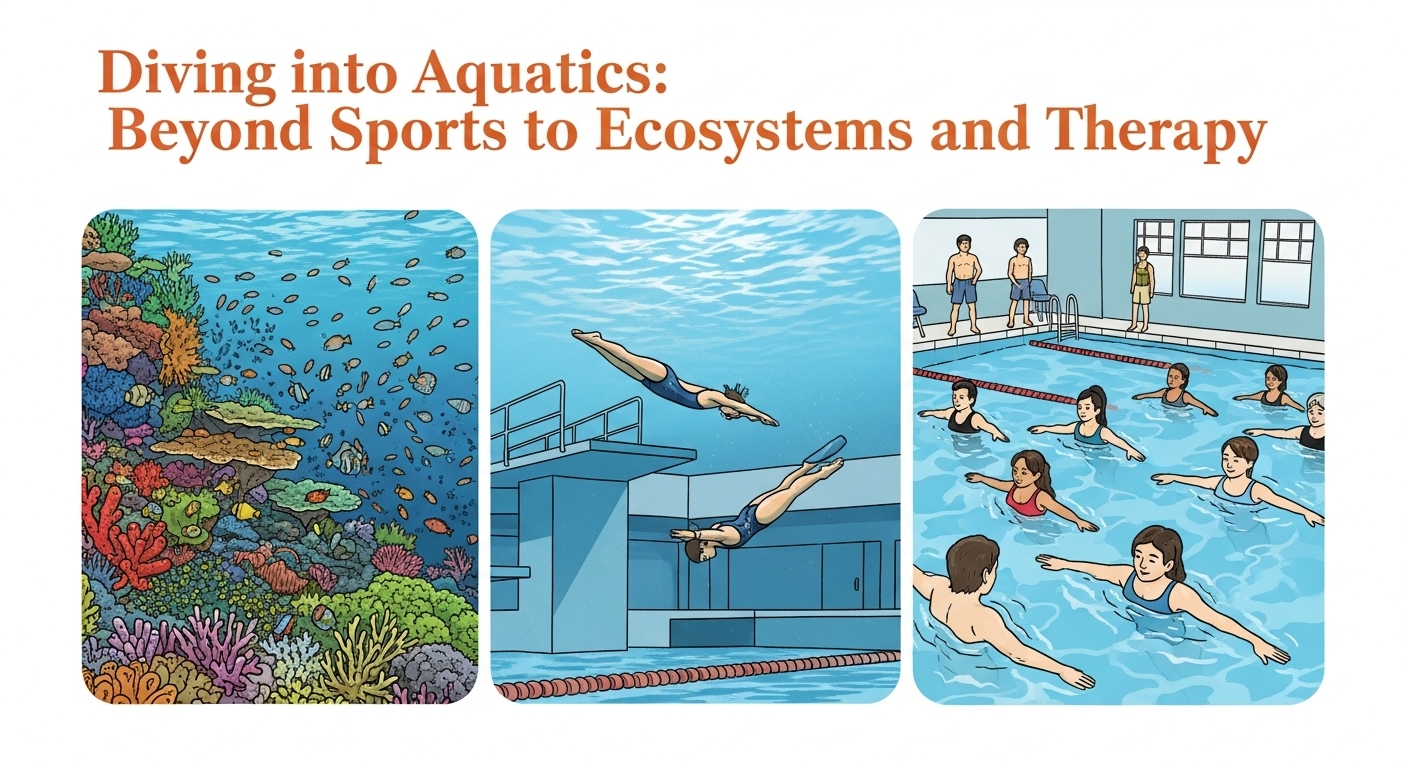“`html
So, let’s dive into the world of aquatics. The word itself can mean quite a few things, you know? It’s more than just water sports or fancy pools. Dive deeper, and you’ll find a world beneath the surface—pun intended—of understanding how we interact with water in diverse ways. Aquatic life, ecosystems, sports, and even therapy. It’s a whole spectrum. You might be curious about this already, and if so, you’re in for an interesting read. Trust me, there’s plenty to talk about.
Understanding the Basics of Aquatics
First off, let’s get on the same page. Aquatics is a term that stretches far beyond just competitive swimming or synchronized dives. It encompasses anything relating to water. From the creatures that inhabit it to the sports we play in it. It’s like the giant umbrella under which all things water-related gather.
Aquatic Sports
When people think of aquatics, they often think of sports like swimming, water polo, and diving. These are staples of the category, right? But it doesn’t stop there. Imagine surfing, kayaking, or even underwater hockey. Yes, that’s a thing! Each sport has its own unique challenges and benefits, offering something for everyone, from hardcore athletes to casual weekend warriors.
Consider this: according to the International Olympic Committee, swimming is one of the most popular Olympic sports. It’s not just about speed but technique. Every stroke matters, and athletes train for years to master the art. It’s like dance, but in water. And for those who prefer team sports, water polo is a brilliant mix of strategy and strength, almost like soccer’s waterlogged cousin.
Life in the Water: Aquatic Creatures
Now, let’s talk about the other side of aquatics—marine life. Oceans, rivers, lakes, and ponds teem with diverse life forms. Fish, amphibians, mollusks, you name it. These creatures are vital to our planet’s ecosystem. And they’re fascinating. Each species has adapted uniquely to survive in their watery environments.
Aquatic life isn’t just about big fish. Think smaller—coral reefs, for instance. These underwater cities are bustling with life. They’re biodiversity hotspots providing shelter and sustenance to countless marine species. Sadly, they’re also fragile, threatened by climate change and pollution. Conservation efforts are crucial here, and many organizations are dedicated to protecting these ecosystems.
Therapeutic and Recreational Aspects
Water has a calming effect. Ever wonder why so many people flock to beaches or lakes for vacation? There’s something inherently soothing about being near or in water. The therapeutic benefits of aquatics are well-documented. Aquatic therapy is used for rehabilitation, pain management, and relaxation. The buoyancy of water reduces stress on joints, making it ideal for those with arthritis or injuries.
Then there’s the fun side of things—recreational aquatics. Pools, water parks, and beaches offer spaces for relaxation and fun. Whether it’s a lazy float on an inflatable or tackling a challenging water slide, the options are endless. Communities often revolve around these spaces, hosting events and activities that bring people together.
The Environmental Impact of Aquatics
There’s no sugarcoating it, humans have a profound impact on aquatic environments. Pollution, overfishing, and climate change are taking their toll. But there’s hope. Awareness is growing, and people are taking action to protect these vital resources. Sustainable practices are becoming more common, and conservation efforts are in full swing. You have individuals and organizations trying to make a difference.
Sustainable Practices in Aquatics
There’s a big push for greener initiatives in aquatic sports and activities. Innovations like eco-friendly surfboards and sustainable swimwear are making waves. In the grand scheme of things, these might seem small, but every bit helps. It’s about creating a culture of responsibility and care for our planet.
Table: Examples of Sustainable Aquatic Practices
| Practice | Description |
|---|---|
| Eco-Friendly Equipment | Using recycled materials for manufacturing surfboards, swimwear, etc. |
| Water Conservation | Implementing policies that reduce water waste in pools and sports facilities. |
| Habitat Protection | Supporting organizations that work to preserve aquatic ecosystems. |
FAQs About Aquatics
- What’s the best way to get started with aquatic sports?
Honestly, just jump in! Find a local pool or club, try a few different activities, see what you enjoy. - Are there environmental concerns with aquatics?
For sure, pollution and overfishing are big issues. But lots of groups are working to tackle these problems. - How can swimming be therapeutic?
Water supports your weight, so it’s easier on the joints. It’s great for rehab and general fitness. - Can anyone participate in aquatic sports?
Definitely! There are options for all skill levels and abilities, from casual swims to competitive sports. - What’s the coolest aquatic creature you’ve heard about?
That’s tough, but maybe the octopus. They’re super smart and can change color. Pretty amazing.
There’s a lot more to explore in aquatics, and this is just a glimpse. Whether you’re drawn to the sport, the science, or the serenity of water, each aspect offers something unique. Keep exploring, and you might find your own special connection to the water.
“`

